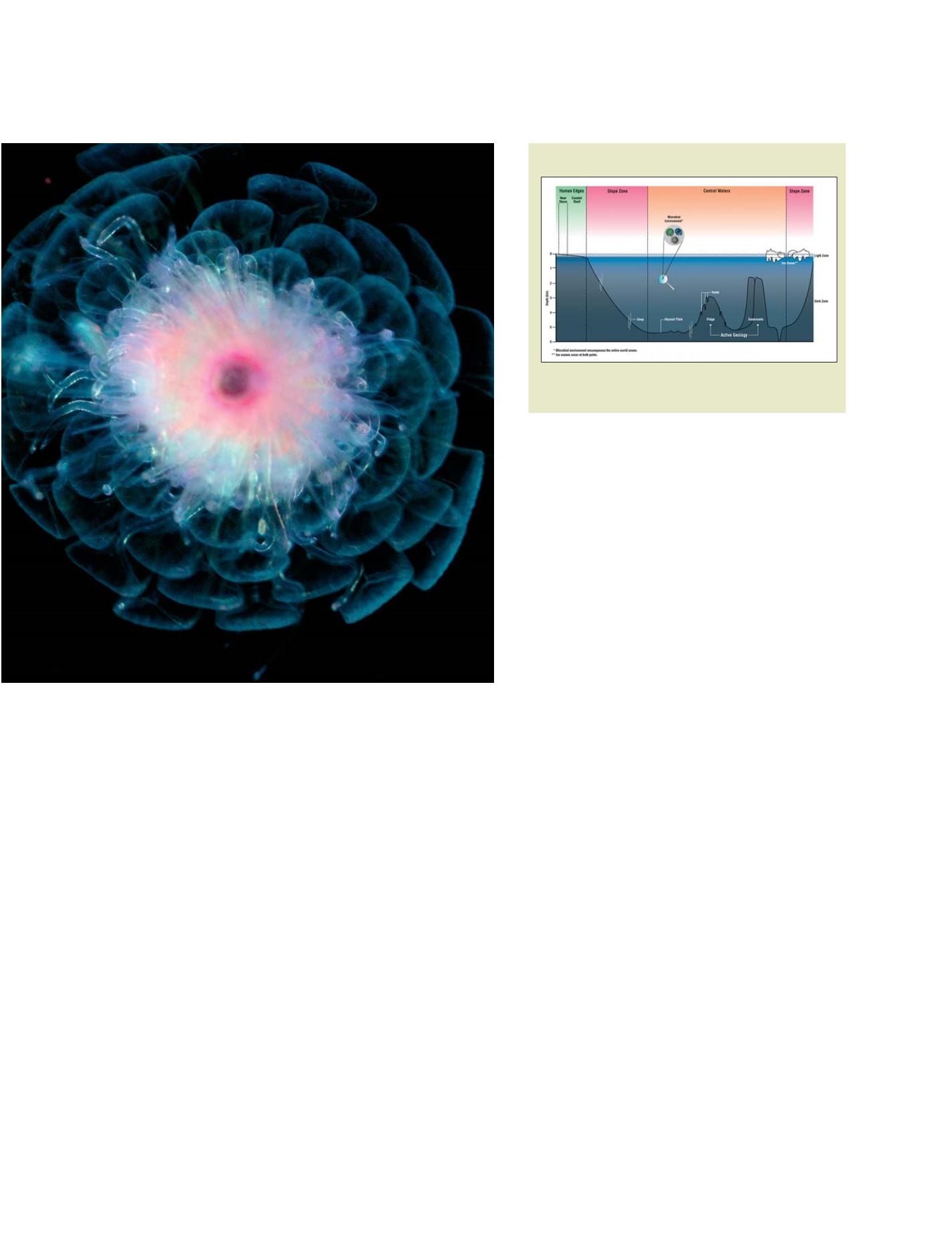

[
] 268
understanding of all factors influencing marine biodi-
versity. The Census also supports the study of historical
records, projects through modelling and data analysis
what the future is likely to hold, and maintains a major
data system – the Ocean Biogeographic Information
System (OBIS) – that brings together in an accessible
format all of the data collected. New technology is being
developed: advanced acoustic methods have been tested
for tracking and mapping fish populations instanta-
neously over thousands of square kilometers, as have
optical imaging of small and microscopic life forms, tele-
metric technologies for identifying and characterizing
ocean hotspots for large predators and quantitative
tracking approaches for global use. The Census also uses
natural DNA labels to keep track of known and newly
found species.
In summary, the Census of Marine Life focuses on
providing a representative, quantitative record of biodi-
versity of organisms from microbes to large marine
mammals through the 1.5 billion cubic kilometres of
the ocean, looking back five hundred years through
historical records and forward fifty years using forecasts
of ecosystem patterns.
Management
The Census is coordinated by a Secretariat inWashington,
DC and governed by an international scientific steering
committee as well as several national and regional
committees. Support for the Census comes from govern-
ment agencies concerned with science, environment and
fisheries in a growing list of nations as well as from private
foundations and companies. The Census is associated or
affiliated with a number of intergovernmental and non-
governmental organizations.
Census achievements
The Census began in 2000 and its first comprehensive
report on findings will be released in 2010. It has
achieved several goals that will contribute to this.
nology, a data system, studies of historical data and future projec-
tions to understand the world of marine biodiversity. Since waters
and animals move, the Census is organized by ocean realms. Each of
the Census field projects focuses on a specific marine region, habitat,
or oceanic community.
The human edge, hidden boundaries and central waters
The coastal projects at the human edge of the ocean are providing
databases, collections and expertise allowing developing countries to
take a more active stance in reporting and defending the natural
biology of their coastal waters. Beyond the coastal zone, the Census
studies biological systems at the continental margins and in the sedi-
ments of the abyssal plains. This information will help to identify
the historical causes and ecological factors regulating biodiversity
and global change. Census field projects reveal the biology of the
deep Mid-Atlantic, and study the unique biology of deep-water vents
and seeps from the sea floor. The Census tracks Pacific salmon and
other migratory species that move through the upper ocean where
sunlight penetrates.
History, future, data and technology
Current Census projects study microbes, plankton, coral reefs, conti-
nental margins, seamounts, and the Arctic and Antarctic to increase
Image of newly discovered species:
Athorybia rosacea
, an animal
that looks like a flower, flapping its petal-like appendages to swim
Photo: Larry Madin, Woods Hole Oceanographic Institution, US
Theoretical cross section of the ocean
An ocean basin cross-section illustrating the realms and zones
of the world ocean as defined by the Census of Marine Life
Source: Census of Marine Life Communications Team,
University of Rhode Island
S
OCIETAL
B
ENEFIT
A
REAS
– B
IODIVERSITY
















